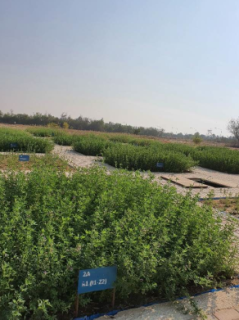
Project
Assessing the fate of contaminants of emerging concern in effluents during irrigation
During drought periods, treated effluents can be a stable water supply for a more climate-resilient agricultural sector, to protect crop production and groundwater reservoirs. In the Netherlands, the focus is on reuse of the water, to either use it as irrigation water for agriculture and/or horticulture, nature conservation i.e. supplying water to drought endangered brooks and creeks, or for groundwater reservoir preservation by artificial recharge. Internationally, treated effluents are considered to be used as irrigation water in even a wider variety of applications, i.e. for non-food crop production and land greening programs in deserts or even for foodcrop related irrigation in fresh water-stressed delta’s. In all the situations we miss the knowledge on what is happening on the chemical interaction at the contaminants of emerging concern (CEC) (e.g. pharmaceuticals , PFAS) side and the soil side after irrigation. Therefore, we will focus on the reuse of water (treated effluent) and fate of CEC compounds.

By understanding the soil CEC’s interaction we can predict the effects on the soil and groundwater quality, in relation to risks associated with water resources and quality of crops. Effluents have the potential to be used as irrigation water during
drought periods and other situations described on the left, while the fate of CEC pollutants should be thoroughly understood and the associated risks well managed.
Technological challenge
This research aims to understand the physical and chemical interaction of CEC’s with soil and groundwater to understand the fate of CEC’s in the environment. A combination of modelling, lab experiments and a field-scale pilot is applied to
understand the interactions with CEC’s and soils, to assess if treated effluents can be reused in a sustainable way as irrigation water without affecting the soil and ground water quality and surface water flow.